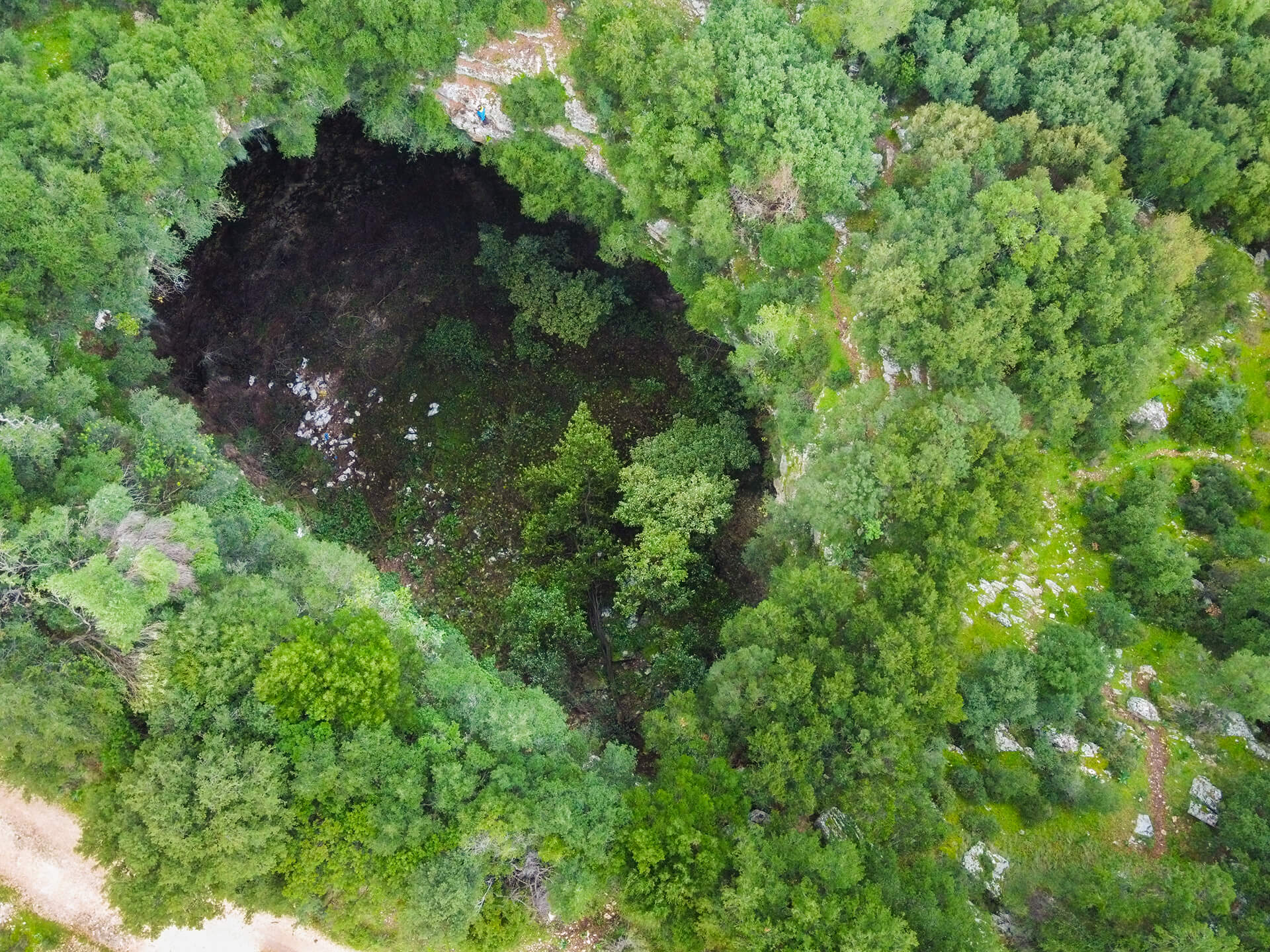The doline Agioi Theodoroi is located in the area of Sami, where several other caves are found. Once a single cavern existed, which over the centuries and due to geological changes that have taken place in the area (earthquakes, rock falls) resulted in its current form. Specifically, it is a precipice (doline) which has been formed by detachments and collapsing of its roof (Figure1). The lush vegetation around the doline, make us feel that we are in the middle of a rainforest.

Geodiversity
After a 20 m vertical descend, a very steep downward scree dome with debris from the collapse of the ceiling is found, and which are partly covered with small trees. 40 m further down, one of the most beautiful parts of the cavern is found. As in the other caves in the area, it is a beautiful blue-green lake with brackish water, the depth of which reaches - 88 m. The terminal lake can be seen from the entrance above (Figure 2). A siphon opens at the bottom of the lake, the entrance of which has the same cross-section as the lake. From -20 m we find clay and rocksand from -4 to -9 m the horizontal stratigraphy shows that recently a rock fall occurred. Then on the left side and at a depth of -28 m, there are wonderful white stalactites, while at the bottom of this gallery, large rocks close the siphon. There are also some inaccessible branches. The surface water is sweet and cold; while deeper it gets saltier and warmer. No fish have been found in the water. The total length of the doline is 125 m. (Figure 3).


Biodiversity
The cave entrance is surrounded by rich vegetation, consisting of typical arboreal species, such as Kermes Oaks (Quercus coccifera), Mastic trees (Pistacia lentiscus) etc. Moreover, the shady vertical walls of the cave favour the growth of climbing and other plant species. Thanks to the overall vegetation composition, the final impression is magnificent! The invertebrate fauna of the cave has not been studied yet, however seven different bat species have been recorded in the area, such as the Greater Horseshoe Bat (Rhinolophus ferrumequinum)(Figure 4), the Noctule (Nyctalus noctula), the Soprano Pipistrelle (Pipistrellus pygmaeus), the Free-tailed Bat (Tadarida teniotis) etc. Also, at least three lizard species occur in places surrounding the cave entrance, such as the Ionian Wall Lizard, Podarcis ionicus, a Balkan endemic.


